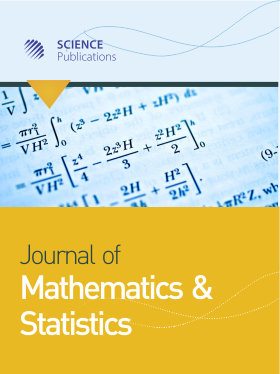Magneto Convection in Tilted Square Cavity with Differentially Thermally Active Vertical Walls
Abstract
Problem statement: The purpose of this study is to study numerically the magnetoconvection in a tilted square cavity with differentially thermally active vertical walls. The two vertical side walls of tilted enclosure are differentially thermally active, each consisting of alternating equal sized hot and cold surface elements facing each other in an opposed manner while the horizontal top and bottom walls are adiabatic. Approach: Alternating Direction Implicit (ADI) and Successive over Relaxation methods are applied to solve the reformulated vorticity-stream function equations. Results: The results are obtained for a wide range of non dimensional parameters, such as Grashof number from 5000-50000, Hartmann number from 0-10 and angles of inclinations from 0-180° of the enclosure in the counterclockwise direction. The detailed flow structure and the associated heat transfer inside the cavity are presented. Conclusion/Recommendations: The average Nusselt number increases with increase in Grashof number but decreases with increase in Hartmann number and behaves in a non-linear fashion with angles of inclination. Further extension of this study could include the effect of aspect ratio, for various Prandtl number and also a study on partially open square cavities with adiabatic walls and a partial opening.
DOI: https://doi.org/10.3844/jmssp.2011.149.156

- 3,833 Views
- 2,709 Downloads
- 1 Citations
Download
Keywords
- Numerical analysis
- inclination angles
- vertical walls
- finite difference scheme
- relaxation method
- external parameters
- angles of inclination
- grashof number
- uniform temperature
- stream function
- Alternating Direction Implicit (ADI)
